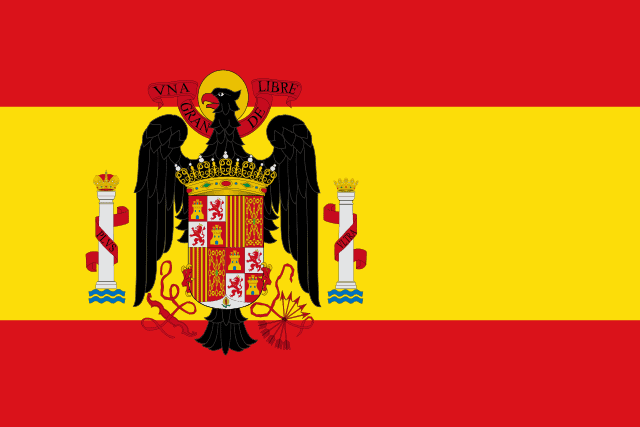Comprehending the meaning of historical photographs can be a difficult task, especially from periods of war where photos are often chaotic and disheveled. But within each photo, there are context clues that give insight into the true meaning of the image. The Spanish Civil War serves as a key example of a war with a murky historical record, but imagery and symbolism from both the Republican and the Nationalist side allows us to get a better picture of the identities of the people in these photographs.
Image 1: Oil painting of General Francisco Franco (circa 1936-1939)


Question: What does this symbol mean?
Depicted on Franco’s shirt pocket is a yoke with five arrows, the symbol of Falagism, which was a conservative fascist ideology promoted by the Nationalists during the war. This clearly indicates Franco’s political alignment, ideology, and the side of the war he promotes.

Question: What is the significance of his hat?
Franco is also wearing a Carlist red beret, which also became part of the uniform for Nationalist soldiers. As their leader, Franco is exemplifying the clothing this soldiers wore throughout the war.
Image 2: Republican Soldiers Resting in France (1939)


Question: Who are these men? What do they stand for?
These soldiers are all holding up their fists to indicate the Communist salute. Communists were one of the biggest groups in support of the Spanish Republic. In addition, the lack of a common uniform– such as Franco’s Nationalist uniform– further indicates that these are : Republican soldiers.
Image 3: Comparing Republican and Nationalist flags
Question: What does each flag symbolize?
On the left is the flag of the Second Spanish Republic, which was replaced after the Spanish Civil War by the flag of Franco’s dictatorship, pictured on the right. These two flags were used simultaneously during the war to differentiate between sides. Spotting these flags (or variations of them) in photographs can be useful for providing context of the identity, ideology, location, and time of people or items pictured.




You do a great job of unpacking the two photos. At first glance, I would never have noticed or understood the details of Franco’s cap or shirt.
And the observation that the soldiers were not in formal uniform was something I totally missed. The raised fist I took as a power sign – though not associated with one side.
I had fun comparing the flags. Interesting to see all the elements that persisted in update – though the layout and scale changed. Great use of the compare feature.
I really like the flag comparison! I think looking at the changes in flags and the symbolism behind flags and how they change is a super interesting historical concept that would be fun to include in a lesson!
I found this really interesting – I have never really learned anything about the Spanish Civil War before. Like Professor Pappas, I would not have noticed much about the meaning behind the shirt or cap until you pointed it out. It is neat how much clothing can tell us about a person and time period. I also enjoyed the flag comparison, I feel like the flags simultaneously have a lot of similarities (like the shield and colors) and a lot of differences (the proportions and central images), and putting them side by side made it easier to observe these details.
Going off of Maggie’s comment, there is lots of good significance between every question you asked which means this activity would be super useful in maybe testing formative assessment or as an introduction to a new lesson. I learned a lot from the post.